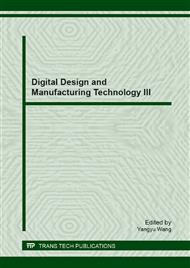p.107
p.112
p.117
p.122
p.127
p.132
p.137
p.142
p.147
Research on the Residual Stress of Aluminum Alloy (LF6) Welding
Abstract:
This paper use the software ANSYS to study the aluminum alloy (LF6) welding residual stress by numerical simulation and experimental study. The result indicates that the aluminum alloy (LF6) has the same residual stress distribution with others, there is a maximum value existing at the range of 4-5mm near the welding seam.
Info:
Periodical:
Pages:
127-131
Citation:
Online since:
March 2013
Authors:
Keywords:
Price:
Сopyright:
© 2013 Trans Tech Publications Ltd. All Rights Reserved
Share:
Citation:


